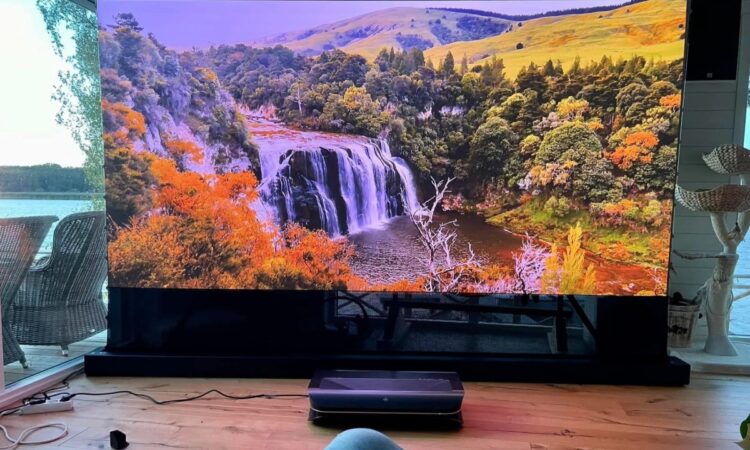
Creating a true cinematic experience at home starts with choosing the right projector and optimizing your setup. Whether you’re converting a living room or dedicating a space to movies and gaming, proper planning ensures the best performance. In this guide, we’ll walk through essential steps—from selecting the best projector for home theater to room calibration—without overwhelming you with technical jargon.
Choosing the Perfect Projection Space
Not all rooms are created equal for home theater setups. Consider these factors before installation:
Light control matters most. Basements or windowless rooms naturally provide the best environment, but blackout curtains or ambient light-rejecting screens can compensate in brighter spaces.
Room dimensions dictate your projector’s throw distance. Measure the distance from your seating area to the screen/wall to determine if you need a short-throw, ultra-short-throw, or standard projector.
Wall/screen surface affects image quality. A matte white screen (or smooth, neutral-colored wall) minimizes hotspots and color distortion compared to textured surfaces.
Projector Selection: Balancing Performance and Budget
While a laser projector offers superior brightness and longevity, your choice should align with actual usage:
- For movie purists, prioritize contrast ratio (5000:1 or higher) and 4K resolution.
- Gamers need low input lag (<30ms) and HDMI 2.1 support.
- Mixed-use spaces benefit from smart features (Android TV, auto keystone correction).
Remember: A higher price tag doesn’t always mean better performance for your specific needs.
Audio Integration: Beyond Built-in Speakers
Projector speakers rarely suffice for immersive sound. Instead:
- Soundbars offer a simple upgrade with virtual surround effects.
- AV receivers + speaker systems provide true multi-channel audio (5.1 or Dolby Atmos).
- Wireless setups (e.g., Bluetooth speakers) reduce cable clutter but may introduce latency.
Tip: Place front speakers at ear level and subwoofers near corners for balanced bass.
Fine-Tuning for the Best Viewing Experience
Even premium projectors require calibration:
- Keystone correction fixes image distortion if the projector isn’t perfectly aligned.
- Color calibration ensures accurate skin tones and shadows (use test patterns or hire a pro).
- HDR settings should match your content—enable for 4K Blu-rays, disable for older films.
- A well-calibrated mid-range projector often outperforms an unadjusted high-end model.
Future-Proofing Your Setup
Technology evolves, but these choices extend your system’s relevance:
- HDMI 2.1 ports support 4K/120Hz for next-gen gaming.
- Laser light sources outlast lamps and LEDs with minimal maintenance.
- Modular setups allow easy upgrades (e.g., adding streaming devices or acoustic panels).
Final Thoughts: Patience Pays Off
The best projector for home theater is the one that aligns with your space, content preferences, and budget. While cutting-edge options like laser projectors excel in brightness and longevity, thoughtful placement and calibration matter just as much as raw specs.
Start with a dark, controlled environment, prioritize key features you’ll actually use, and gradually refine your setup. The result? A theater experience that rivals the multiplex—without the overpriced popcorn.
